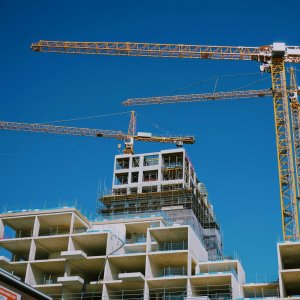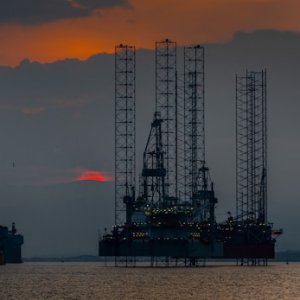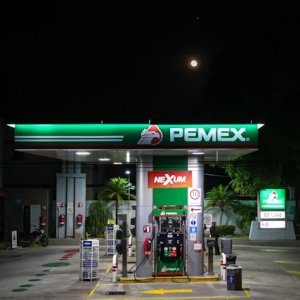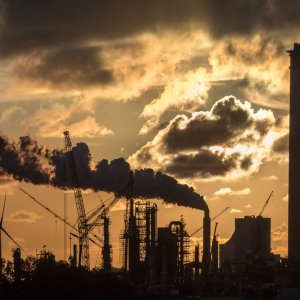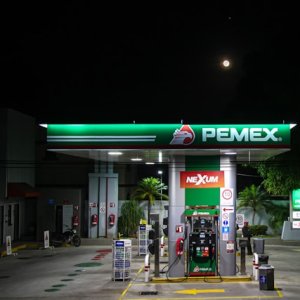
Building A New COVID-19-Proof Industry
 By Pedro Alcalá | Senior Journalist & Industry Analyst -
Fri, 07/02/2021 - 09:59
By Pedro Alcalá | Senior Journalist & Industry Analyst -
Fri, 07/02/2021 - 09:59
The beginning of the pandemic was marked by simultaneous challenges for the industry, of which COVID-19 was only one. However, as the government declared all hydrocarbon activities economically essential, it became clear that maintaining operational continuity past April 2020 and throughout the entire year in the midst of a pandemic would take a collective effort that would be unique in the industry’s history.
José Luis González, who heads up ASEA’s Supervision, Inspection and Industrial Surveillance Unit, believes the agency was successful in adapting to an ever-evolving timeline: “At the beginning of the pandemic, we were told that all activity would be regularized by May at the latest. We all know normality was not restored by then. However, we began adopting online modalities and receiving all the training necessary to manage them,” he told MBN.
ASEA’s existing and internationally compliant SASISOPA protocols established criteria that was analyzed to assess hygienic operational risks in a way that was applicable to situations created by COVID-19 in isolated offshore worksites. In a sense, ASEA already had weapons in its arsenal to battle the pandemic. All it had to do was align new guidelines and standards to these previously established bases. This also speaks positively to the preparedness of Mexican authorities in the face of this unprecedented global event. This, however, does have to be balanced with the actual results PEMEX delivered during the worst of the pandemic.
The NOC was, at a global level, the company with the most COVID-19 contagions and the highest rate of COVID-19 mortality as it was unable to shut down its operations completely. By the end of August 2020, PEMEX was reporting 110 new COVID-19 cases daily, totaling 7,232 confirmed cases among the NOC’s workforce, out of up to 20,157 suspected cases that were reported, resulting in a contagion rate of 35.9 percent and 1,225 deaths. Of those who had passed away, 534 were retired, 385 were members of a worker’s family, 300 were onsite workers and six were external suppliers. PEMEX had a COVID-19 mortality rate of 16.94 percent.
In August 2020, PEMEX also launched its “Phase 3” protocol, which entailed the disembarking of 3,094 offshore workers. By February 2021, however, all projects that had been suspended for any reason were reactivated, despite the fact that contagion rates were again rising at 17 percent. All home office protocols were concluded by April and even though progress was reported regarding PEMEX’s vaccination program, even the oil workers’ union issued official complaints that the NOC was not being forthcoming at the time with its sharing of information regarding its own internal COVID-19 bookkeeping.
The terrible impact of COVID-19 on PEMEX was also exacerbated by the unfortunate demographic characteristic of the NOC’s workforce, as most people were at risk in terms of age, with the general age distribution leaning toward the 40- to 50-year-old population. González and other regulators understood that the declaration of oil and gas activities as essential was both understandable and also undesirable. “We understood the centralization of the hydrocarbons sector because there was no other viable industrial engine for the country’s economy. However, this fixation also represented a hard blow to the sector’s regulators.” ASEA and other public authorities had to deal with many officials being sent home due to their vulnerable condition against COVID-19. Previously-established safety regulations turned out to be a huge support for González’s main priority, which was to reduce the risk of COVID-19 contagions, both within the agency and at the worksites of regulated entities.
Private Sector Contributions
González recognized that international companies that operate in Mexico and that are subject to ASEA’s regulations played a part in fine-tuning protocols and requirements as they received feedback and valuable insights from other parts of the world. ASEA participated in international webinars with other international regulators, where experiences and case analyses were shared. This was a matter of aligning priorities; private operators and industry associations that represent them acknowledged this as a major concern to operate safely in this new normality. “Offshore platforms and vessels present unique environmental and spatial risks when managing personnel operations and activities, especially in regard to anti-contagion industrial safety precautions and protocols. Many of these workplaces can be quite confined, with recirculated air that creates additional risks for accelerating the infection rates in certain cases,” said Merlin Cochran, Director General of AMEXHI.
For private operators to implement safety protocols as effectively as possible in offshore environments, AMEXHI partnered with state governments and port APIs. Other regulating entities such as SENER, CNH and SE have also played a significant role in doing the necessary work to make this possible. “Thanks to their efforts, we have had the flexibility to implement these protocols,” added Cochran.
However, the larger historical question is, how successful were these collective efforts in terms of protecting the industry from the worst impacts of the pandemic and ensuring a steady recovery? Hermes Aguirre, Mexico Country Vice President of Halliburton, believes that one of the fundamental parameters by which the state of the industry can be judged is the rate at which the global economy is recovering. “Global COVID-19 policies (such as travel restrictions) had an enormous impact on oil and gas operations. But one recovery indicator for our industry is consumption and those rates are beginning to climb.”
It seems that the industry is on its way to recovery and economic cooperation is accelerating this. As one of PEMEX’s operational partners, Halliburton recognizes the government’s investments, financial status and national oil asset portfolio as Mexico’s defining element. Aguirre believes that thanks to this investment remaining steady throughout the pandemic, a degree of activity continued throughout 2020 despite difficult market conditions. “We successfully braved this difficult time by implementing protocols to keep workers safe while maintaining operational continuity. Fortunately, the ongoing fall of production levels eventually stabilized and reverted,” said Aguirre.
Lessons Learned?
A main takeaway from the pandemic is the further implementation of digital and remote monitoring and operational technologies. “A great deal of real-time monitoring technologies and systems had to be implemented so specialized knowledge would not be wasted. Operators are planning to accelerate their activities but they are also aware that they have to cope with a whole new landscape,” said González, highlighting that these technologies are not only necessary to prevent contagions but to achieve industry efficiency. This is crucial as drilling platform day rates for offshore operators, particularly those working on deepwater projects, are again hovering around US$500,000. Also, those platforms now have to adjust to longer offshore shifts, which have increased to 28 days from 14, plus any number of additional quarantine-derived delays for specialists from abroad. “All of this, plus new and strict hygiene protocols to prevent COVID-19 contagions, changes the economic logic of development plans.”
COVID-19 did not create many problems but merely highlighted what already were existing concerns in the industry. “(The) digital transformation began before the pandemic and its main objectives have always been to increase client and customer satisfaction, not just to adapt to the needs dictated by safety measures related to COVID-19,” said Tania Cerda, Vice President of Marketing and Sales for Mexico and Central America at Schneider Electric.



